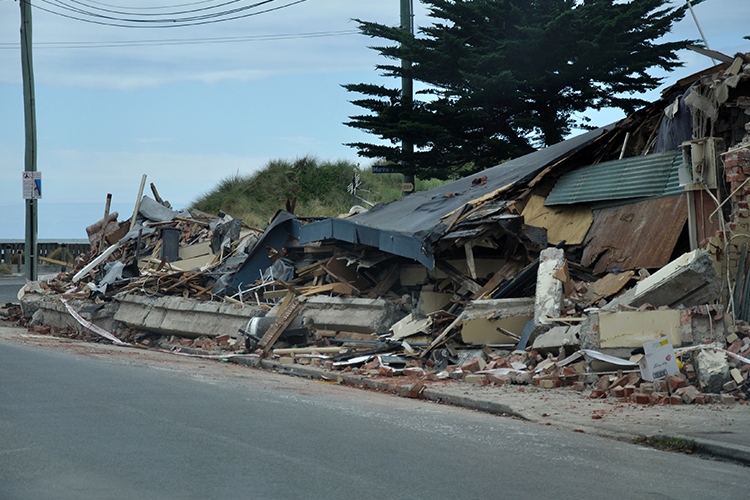By Lisa Dalbeth, loss adjuster
On 15 January 2022, the Hunga Tonga-Hunga Ha’apai submarine volcano erupted in the South Pacific.
It produced one of the largest atmospheric explosions in recorded history, sending a plume of ash into the upper atmosphere. The eruption triggered a tsunami with waves up to 18 metres high washing over nearby islands and severing critical sea-floor data and communication cables which restricted communication links for months.
The damage to property across The Kingdom of Tonga was extensive, with seawater and debris flowing through many coastal buildings. Everything was covered in a thick layer of volcanic ash. We received instructions on a combination of claims ranging from major commercial losses for businesses within the construction and hospitality sectors, as well as high-end residential property claims.
Responding to challenges
To add to the complexity, Tonga’s borders were largely closed prior to the event in response to the COVID-19 pandemic. Residents and returning citizens were the only ones able to enter the country, with strict 21-day managed quarantine requirements on arrival.
However, things were soon to become even worse for the already devastated communities when COVID-19 arrived in the Kingdom. The country went into a nationwide lockdown that lasted weeks, significantly restricting movement around the country.
Thankfully, innovative thinking is what Sedgwick’s major and complex loss team in New Zealand and around the world does best. We thrive on overcoming even the most challenging of situations and quickly implemented our bespoke remote major catastrophe (CAT) response strategy.
Local support and team approach
Initially, internet connection across Tonga was significantly reduced, so contact was restricted to intermittent cell phone calls and text messages. Customers were immediately contacted, providing early guidance on mitigation measures and an assessment strategy.
Given the communication link outage, some of our remote assessment technology tools were not available, so we had to find innovative ways to validate losses. As well as working collaboratively with our instructing clients and their customers, we formed strong relationships with Tonga-based professional consultants, and they became our eyes on the ground, particularly on larger claims. We also established a strong team of highly qualified NZ-based consultants with comprehensive experience across the Pacific to assist with the adjustment process.
Understanding key issues
Following any major event, it is critical to identify the key issues that are apparent, including the typical damage to properties, early mitigation measures, as well as wider issues that arise from such devasting events. That is where the wealth of experience across our major and complex loss team enables quick, strategic planning.
Volcanic ash had blanketed properties and vehicles across the main island of Tongatapu, as well as the outer islands of the Kingdom, with ash deposits up to 30mm deep in several places. Volcanic ash comprises small fragments of volcanic rock, which is abrasive, mildly corrosive and does not dissolve in water.
As such, removal of the ash isn’t as straightforward as you might think, particularly when it has entered the tracks of sliding doors, window mechanisms and air conditioning units. When the ash gets wet, it solidifies. Unfortunately, it rained for days following the event to compound issues further, which led to the hardened ash dislodging guttering and blocking drainage systems.
Seawater from the tsunami is also corrosive, leading to downstream issues with electrical cabling and the like that needed to be fully understood and considered before reinstatement scopes were developed.
If the numerous challenges already encountered were not enough, the event occurred during a period whereby global building material supply chains had been significantly impacted. While Tonga is quite self-sufficient in many ways, they still rely heavily on imported building materials and labour. This meant that supplies of materials to reinstate damaged properties were significantly delayed.
Settling claims
Our major and complex loss adjusting team quickly gained an in-depth understanding of the key issues associated with volcanic ash and best practice guidance in addressing the risk. They collaborated with people on the ground, our other in-house experts at Sedgwick and our external consultant network. This understanding of the risk, challenges and best practice mitigation steps allowed us then to design our adjustment strategy.
Technology will continue to play a key role in the adjustment of claims globally, particularly in remote locations such as the Pacific Islands. However, when faced with challenges that restrict technology options, the early development of a bespoke adjustment strategy specific to the circumstances is critical to the successful resolution of claims, with collaboration and a team approach at the forefront.
Some of the largest claims associated with the Tonga Earthquake were settled within four months, with all claims settled by the end of September 2022. While Tonga has a long road ahead to fully recover from this catastrophic event, the adjustment strategy implemented has enabled business and homeowners to reinstate their properties and carry on with their lives.

